Common Name(s): Purpleheart, amaranth, roxinho, violeta
Scientific Name: Peltogyne spp.
Distribution: Central and South America (from Mexico down to southern Brazil)
Tree Size: 100-170 ft (30-50 m) tall,
3-5 ft (1-1.5 m) trunk diameter
Average Dried Weight: 56.4 lbs/ft3 (905 kg/m3)
Specific Gravity (Basic, 12% MC): 0.76, 0.9
Janka Hardness: 2,520 lbf (11,190 N)
Modulus of Rupture: 22,000 lbf/in2 (151.7 MPa)
Elastic Modulus: 2,937,000 lbf/in2 (20.26 GPa)
Crushing Strength: 12,140 lbf/in2 (83.7 MPa)
Shrinkage: Radial: 3.8%, Tangential: 6.4%,
Volumetric: 10.6%, T/R Ratio: 1.7
Color/Appearance: When freshly cut the heartwood of purpleheart can be a dull grayish/purplish brown. Upon exposure—usually within a few days—the wood becomes a deeper eggplant purple. With further age and exposure to UV light, the wood becomes a dark brown with a hint of purple. This color-shift can be slowed and minimized by using a UV inhibiting finish on the wood. For more information, see the article Preventing Color Changes in Exotic Woods.
Grain/Texture: The grain is usually straight, but can also be wavy or irregular. Has a medium texture with good natural luster.
Rot Resistance: Purpleheart is rated as being very durable, and resists both decay and most insect attacks, though it has been reported to be susceptible to attack from marine borers.
Workability: Working with purpleheart can present some unique challenges: if the wood is heated with dull tools, or if cutter speeds are too high, purpleheart will exude a gummy resin that can clog tools and complicate the machining process. Depending on the grain orientation, can be difficult to plane without tearout. Purpleheart also has a moderate dulling effect on cutters.
Odor: Varies depending upon the species: most species have no characteristic odor, though some species can have a pungent scent.
Allergies/Toxicity: Although severe reactions are quite uncommon, purpleheart has been reported as a sensitizer. Usually most common reactions simply include eye and skin irritation, as well as nausea. See the articles Wood Allergies and Toxicity and Wood Dust Safety for more information.
Pricing/Availability: Widely available as lumber in good widths and thicknesses. Prices are in the low to medium range for an imported hardwood.
Sustainability: This wood species is not listed in the CITES Appendices. However, since purpleheart is a grouping of many species, its unclear if any given lumber is on the IUCN Red List of Threatened Species. Some of the more commonly harvested Peltogyne species, such as P. mexicana, P. paniculata, and P. venosa are not listed on the Red List. Many other species are listed as being of least concern. However, two species, P. chrysopis and P. gracilipes are both listed as endangered due to a small (less than 500 km2) and fragmented area of occupancy.
Common Uses: Inlays/accent pieces, flooring, furniture, boatbuilding, heavy construction, and a variety of specialty wood items.
Comments: Sometimes called amaranth, this colorful Latin American hardwood is tremendously popular for furniture and other designs that call for a unique splash of color.
In addition to its coloration, purpleheart has excellent strength and weathering properties, and can be used in applications where strength or durability is important—a wood with both form and function.
Images: Drag the slider up/down to toggle between raw and finished wood. The second set of pictures shows the short-term color shift that happens when the wood is freshly sanded and after three weeks’ time.
A special thanks to Steve Earis for providing the photo of the finished bowl of this wood species.
Identification: See the article on Hardwood Anatomy for definitions of endgrain features.
Porosity: diffuse porous; growth rings may be either distinct (due to marginal parenchyma) or indistinct depending on species and growing conditions
Arrangement: solitary and radial multiples
Vessels: medium to large, few; purplish deposits common
Parenchyma: winged, lozenge, confluent, unilateral, and occasionally banded (marginal)
Rays: medium width (barely visible without lens); normal spacing
Lookalikes/Substitutes: Its uniquely purple color isn’t commonly confused with anything else. Pieces with dulled or brown color can be confused with many other diffuse porous tropical hardwoods. However, Peltogyne species usually have unilateral parenchyma surrounding only one side of the pore—a feature not commonly seen on most other woods.
Notes: Heartwood fluoresces under blacklight
Related Content:

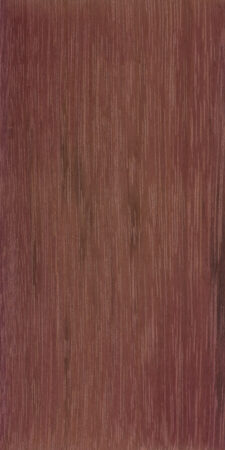

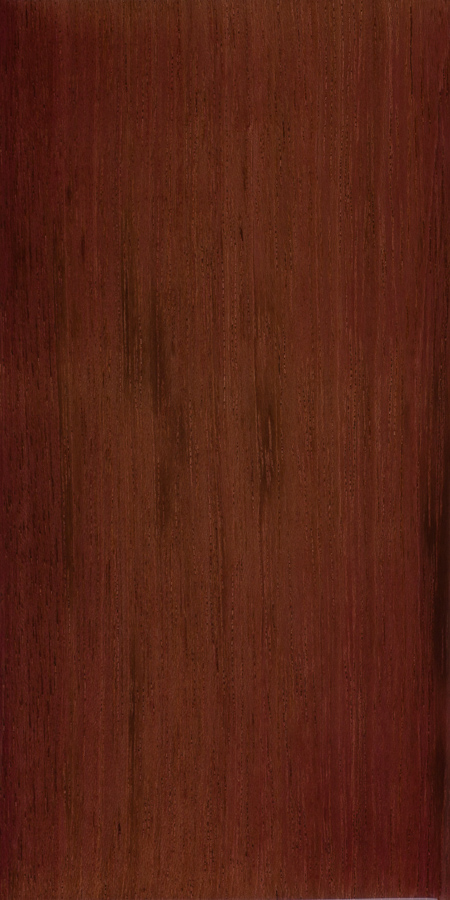
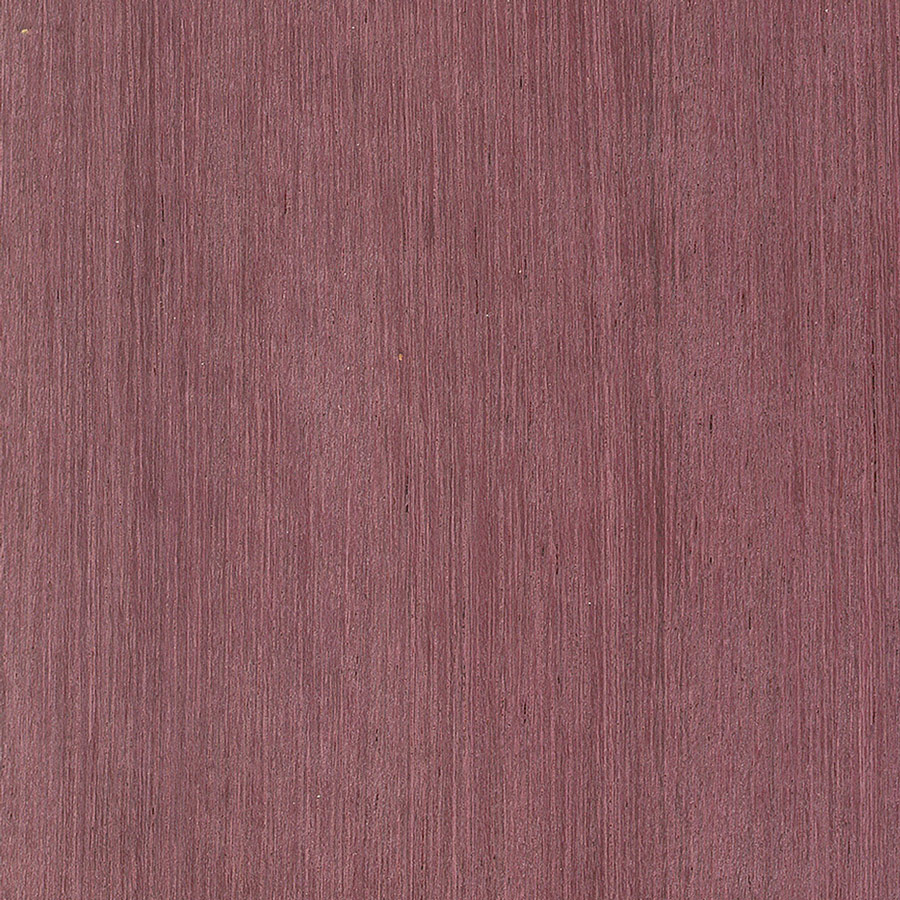
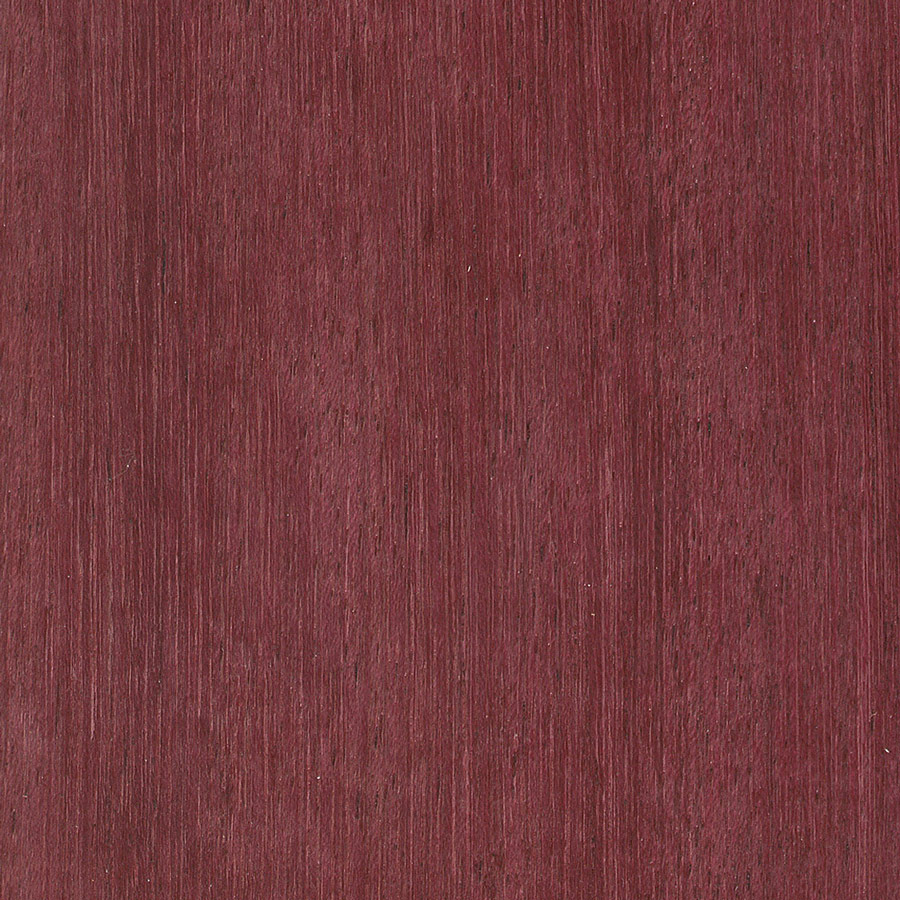
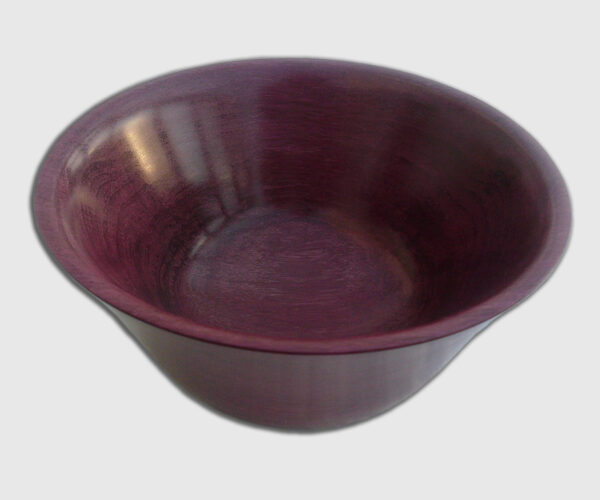
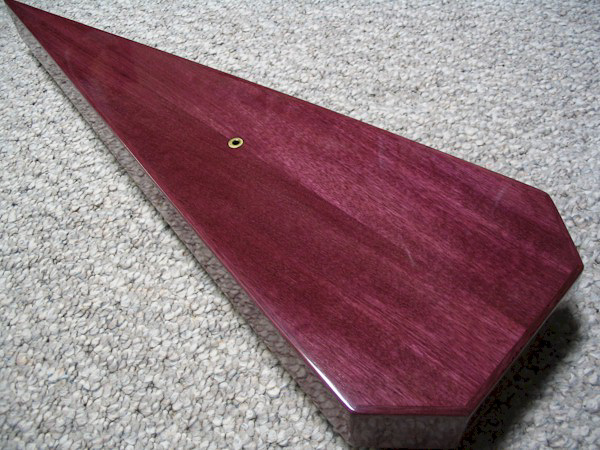





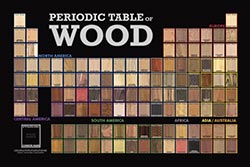
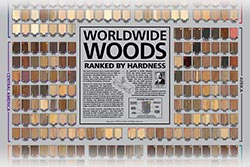






Kubotan I made from a purpleheart pen blank. Pictures “before” and “after”. The color of this wood is really fantastic, deep purple (eggplant), the photo couldn’t catch it fully
Could anyone tell me how to treat the purpleheart to bring out the purple and have it mostly retain its color over time?
Custom name chopsticks to Irvine, CA ?
Purpleheart baton.
Hi Moran. Did the color stay like this after months or did it become more brown? If it shifted in color, could you show what it ended up looking like? And how did you treat the purpleheart?
Purpleheart Pens I have made. Always popular!
Wow, stunning! Can I ask, how do you bring out the purple color?
Cribbage board I made from purpleheart.
Absolutely incredible color on this. What did you use to finish it?
It’s 6 coats of Minwax High Gloss Polyacrylic,
How did you bring out the purple color? Was it a color available in Minwax, or is it just clear fininsh on raw wood? I have a bass guitar w a purpleheart fret-board or finger-board. It looks like the standard rosewood commonly used on guitars and basses, and it’s just a dark-brown color. I’d love to give it that purple color like your board!
After removing the top layer, the wood has a pronounced purple color, which begins to turn brown over time. Therefore, you need to immediately apply varnish (you can add a UV inhibitor). Despite this, the wood still darkens a little over time and the color becomes less bright and purple (more brown). This photo was obviously taken immediately after varnishing. Because in a month the color would have changed.
Hi Peter. Do you have a photo of the color it ends up as? I’m considering commissioning a chess set in purpleheart but I need to get a sense of how much the color is retained.
In the first photo you see the coffee table immediately after production (African padauk and amaranth). In the second photo the amaranth stripes have already faded and the purple color can only be seen at a certain angle. The photo does not convey the shade, but in real life it looks more like gray-brown with a purple tint
The photo of the 5 goblets of birch, purpleheart, padauk, maple, & walnut did not show up on my last post. Here it is again.
Different types of wood make very nice contrasting wood turned goblets, as shown below in the far-left picture. Left to right, the cups & bases consist of birch, purpleheart, padauk, maple, & walnut. An inside shot of the maple cup shows the 9 pieces of square wood dowels used to make the stem; I coat the cup bottom with a thin layer of epoxy with iridescent mica sprinkles (they sparkle in the light), and the inside walls with melted beeswax to ensure they are “food safe”. Outside is (of course) “OB friction polish”. The next photo (#3) is of a… Read more »